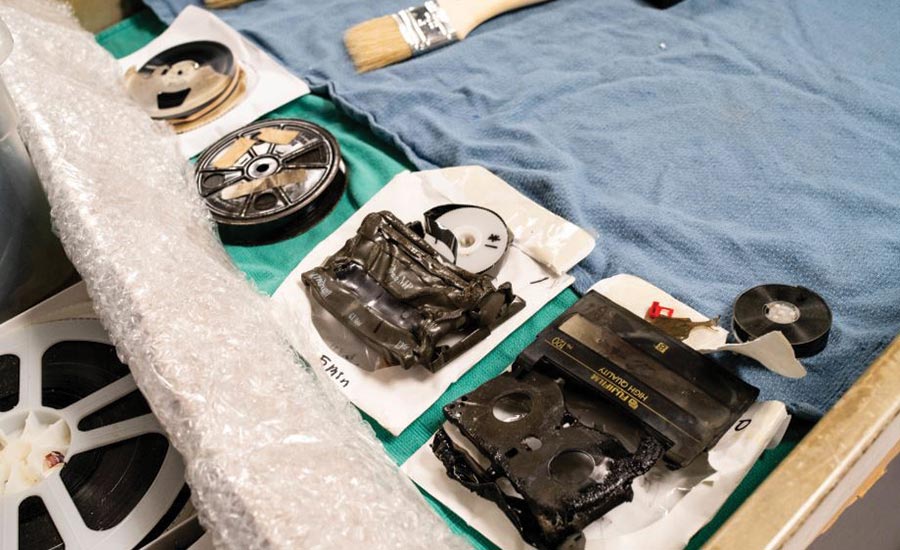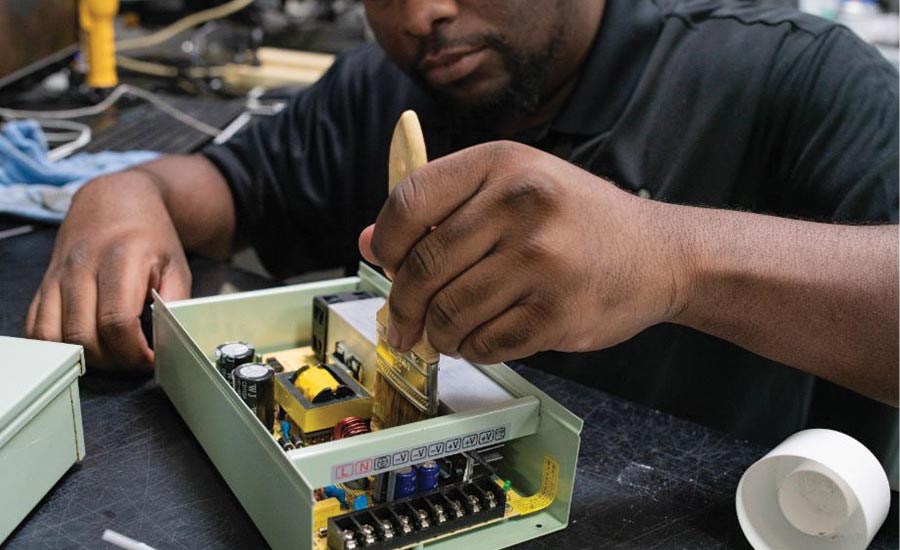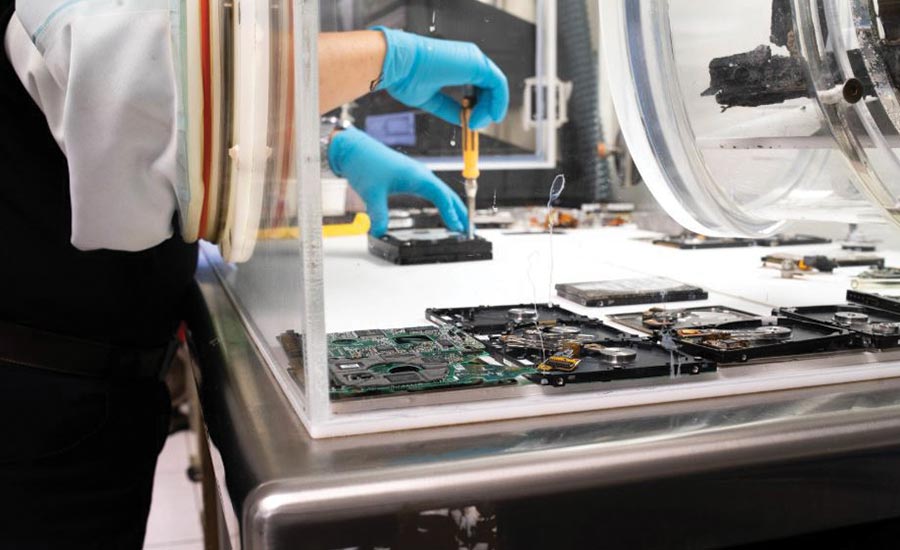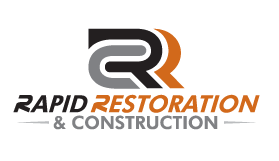Recognizing Hidden Hazards of Fire Soot on Electronics
Have you ever tried fixing your own electronics and appliances and ended up with extra parts? In the beginning of my career, I probably broke more electronic equipment than I ever repaired, but over the years I developed the skills needed to properly disassemble electronics and appliances as well as restore them to pre-loss condition. Also, along the way I learned a thing or two about the hidden hazards of fire soot.
According to the insurance industry, about one in 325 insured homes has a property damage claim related to fire and lightning, and on average, Americans own approximately 25 electronic products per home. Although most of the time electronics can be restored by a professional after a fire and returned to the home afterwards, there are a lot of hidden hazards of smoke and soot damage that are commonly misunderstood and pose certain health risks when not handled properly.

A typical structure (residential home or business) contains various materials such as plastics, elastomers, foams, polymers, adhesives, fabrics, wood products and asbestos containing materials. The incomplete combustion of these materials as a result of fire can produce an array of toxic organic compounds such as volatile organic compounds (VOCs), semi-volatile organic compounds (SOVCs), and polycyclic aromatic compounds (PAHs).
Exposure to these compounds during a fire may exhibit both acute and chronic toxicity. Some of the other chemicals and gases found in smoke are carbon monoxide, carbon dioxide, sulfur dioxide, water vapor, hydrogen cyanide, carbon particles, aldehydes, nitrogen oxide, benzene, toluene, styrene, metals, and dioxins. The size, quantity, character, and type of particles, gases, and chemicals in smoke varies depending on what is burning and whether it was complete or incomplete combustion.
When different types of items burn, various types of soot residue and smoke are produced including wet smoke, dry smoke, plastic or rubber smoke, protein smoke, furnace soot, and candle smoke. When restoring or cleaning electronics, it is important to be able to recognize the difference in various types of soot and smoke as they pose different risks and implications.
Wet smoke is thick, smeary, sticky, has a pungent odor, and is prone to discoloration. It is very difficult to clean and requires specialized products and techniques. Wet smoke must be addressed quickly.
Dry smoke typically involves smaller, non-smeary particles, and is usually a result of hot, fast burning fires. The odor is usually not as strong as wet smoke.
Burning Plastic, foam, rubber, and polymers produce plastic or rubber smoke and burn with high energy at low temperatures. The particles produced have a high degree of ionization, therefore are attracted to other materials and form smoke webs. The smoke produced can potentially be acidic, if it is not addressed soon enough or treated properly with specialized products, bare metal surfaces can corrode and pit.
Protein smoke residue is a result of slow burning food such as meat and poultry. The particles are usually invisible and have a particularly strong pungent odor. A slow burn allows the protein to disperse and attach to everything, tends to stain painted and varnished surfaces, and is typically very difficult to clean.

Furnace soot or puff-backs result from the misfiring in a furnace or when an older furnace is replaced with a newer, high efficiency furnace. The ventilation system will aid in the distribution of the soot and can send it throughout the entire home, covering drapes, bedding, furniture, cabinets, walls, and everything in between. It is possible that before the malfunction occurred, the furnace may have been emitting small quantities of soot over an extended length of time. When this occurs, the soot bonds to the surfaces making it more difficult to clean.
Candle soot residue AKA “dirty house syndrome” is visible residue without a recognizable fire source. Studies show that it is very possible to be a result of burning cheap scented decorative candles. Candle soot production normally begins when the particulate matter produced reaches .06 to 0.1 microns in size. Because the particles are so fine, they lodge in irregular surfaces and are held by electrostatic bonds requiring complete disassembly of the item.

Smoke aids in the distribution of soot and travels to cooler areas and continues until the fire is extinguished, thereby causing soot to be distributed everywhere in its path.
When it comes to restoration, electronics are very sensitive and when compromised by smoke and soot, become a safety hazard. Damage from smoke and soot primarily stems from increased resistance in circuits and connections by corrosive metal loss, short circuiting caused by current leakage, and overheating. Cleaning smoke and soot damage on electronics and appliances requires learned skill sets, professional cleaning products, and techniques. It is important to take the complexity of effective electronics restoration into consideration before letting your team disassemble a computer or flat screen TV and hope for the best.





 10201 W. 43rd Ave
10201 W. 43rd Ave
 303-412-9999
303-412-9999
